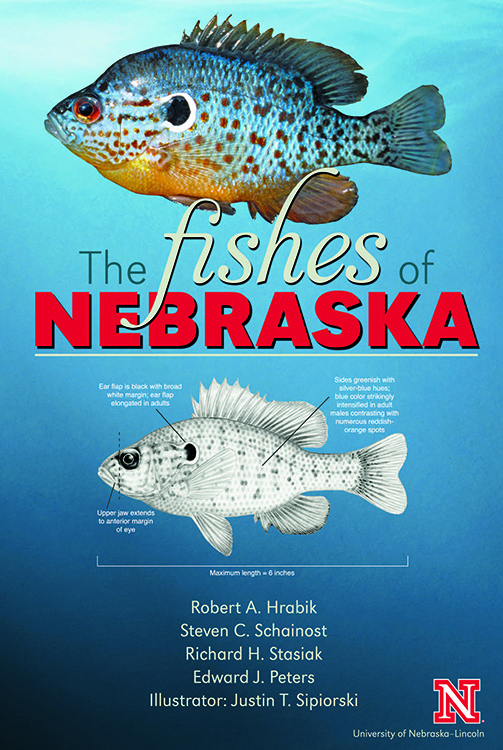
You don't have to be a fisherman to appreciate "The Fishes of Nebraska," a recently published book featuring information on each of Nebraska's more than 100 fish species.
"Useful to naturalists, scientists, students and the layperson, the book will aide anyone wanting to identify a fish using the meticulous illustrations of each of Nebraska's extant native and non-native fishes," said Bob Hrabik, lead author and ichthyologist at the Missouri Department of Conservation.
"The Fishes of Nebraska" includes an insert of color plates of the fishes, distributional maps, species accounts and descriptions of Nebraska's stream networks. The book also examines how geography, geology and human impacts have influenced fish species composition.
"The book is an important contribution to scientific literature, as the state of Nebraska has never had a natural history text covering this faunal group," Hrabik said.
The book is part of the field guide series published by the Conservation and Survey Division at the University of Nebraska-Lincoln. Its authors include Hrabik; Steven Schainost, fish biologist at the Nebraska Game and Parks Commission; Richard Stasiak, professor emeritus at the University of Nebraska Omaha; and Edward Peters, professor emeritus at UNL. Illustrations are by biological illustrator Justin Sipiorski.
"'The Fishes of Nebraska' is an exemplary compendium on the subject," said Matt Joeckel, CSD director and Nebraska state geologist. "We are all proud to see the book published here in the Conservation and Survey Division and the School of Natural Resources, and we view its publication as an upward trajectory in our long tradition of publishing guides to the natural history of Nebraska."
Hrabik said the book is "an important first step" in understanding how human activities affect natural resources in Nebraska and throughout the Great Plains.
"In light of significant changes to the landscape and climate, it has never been more pressing to document which fishes once lived here and how the populations and communities are changing," Hrabik said. "We hope that the readers of this book gain an appreciation for fishes and all aquatic animals that also use a resource in very high demand: water. They are just as deserving of water as humans and provide us with food, enjoyment and wonder."
"The Fishes of Nebraska" is $39.99 and available for purchase from the Nebraska Maps & More Store on the first floor of Hardin Hall at 33rd and Holdrege streets. Call 402-472-3471 to order by phone. The book can be ordered online at http://go.unl.edu/fishesofnebraska and http://amazon.com.
A reception and book signing will take place at 3:30 p.m., Jan. 28 at the Nebraska Maps & More Store. Refreshments will be provided. The event is free and open to the public.
— Mekita Rivas, Natural Resources